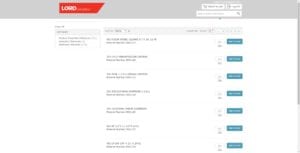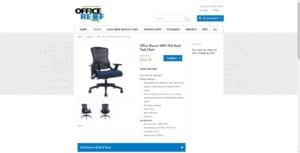Share
Author
George Anderson
Share
Personalized catalogs–straight from SAP
Corevist has the expertise to create SAP sourced personalized product catalogs in Magento. One of the more interesting projects we’ve done recently was to create personalized product catalogs for a client that has 5000+ products, 300-500 customers and 40 market segments. I spoke with Noah Scribner, Corevist’s Magento Practice Manager who is our resident “integrating Magento with SAP” guru.
Sarah: Noah, how big and complicated was this project?
Noah: The best way I can describe it, it was a morass of information. Think of untangling a giant hairball and you’ll have an idea of what we were dealing with. The challenge was our client, LORD Inc., has 300-500 customers, thousands of items for sale and 40 market segments. When you have that much data to deal with, extracting the right data from SAP to present personalized product catalogs in Magento for individual users is a huge challenge.
Sarah: Can you talk a little bit more about this?
Noah: We always start with SAP. It’s the base of the pyramid. The Customer Master and the Material Master have to be correct in SAP. In most cases we add attributes to SAP so that we can extract the “right” data to Magento because the end goal of this project is to get a customer to complete a purchase—allowing him to put the right items in his shopping cart and then placing the order in SAP.
Sarah: How do you check the data in SAP?
Noah: The first step was identifying what products/materials LORD wanted to display in their catalog. In order to identify the products we need to key off an existing identifier in the Material Master of SAP, or in some cases we’ll have the client’s SAP team create a new one to be used for e-commerce. Because LORD had so much data and so many customers we grouped them by market segment.
Sarah: Once you’ve created attributes in SAP, how did Magento know which catalog to display for each of LORD’s customers?
Noah: That’s where Corevist’s software comes in. Each customer has a unique username that our software associates with a catalog. Corevist extracts the relevant product catalog from SAP based on both the username and the rules created in SAP, and displays that specific catalog in Magento. It was an iterative process between Corevist and LORD. The starting point was “what exists in SAP?” and we began with the first data extract to see how the product catalog was going to take shape. With such a large project we decided to group customers into market segments because creating unique catalogs for 300-500 customers would be unmanageable. Towards the end of the project we found that we had an additional subgroup so we went back to SAP to add attributes so that subgroup would have its own catalog. It really was a process of untangling that giant hairball into something that was manageable and user-friendly.
Sarah: Magento has some great features that allow a B2B shopping experience to feel like a consumer shopping experience. How does Corevist leverage those features?
Noah: It depends on the client. LORD is an industrial supplier and their customers are distributors. I’d call them “power users.” They know what they’re looking for and are efficient shoppers so a clean, uncluttered screen is best for them. You can see a screen shot of their product catalog below. It lists the name of the item, the material number and a search feature so a user can search by material number or name.

On the other hand, Office Relief wanted to show pictures of their products, so Magento displays the name and photo of the item along with the different quantities and the packaging type. It’s a more consumer-ish feeling. Corevist and the client figure out the best way to display items in Magento.

I can’t overstate how important the personalized product catalogs are. They take the “institutional knowledge” that sales reps and customer service reps have and captures them in SAP. When we went live with LORD’s catalog we realized that we didn’t have a feature for sales reps to send samples to distributors so we added that into SAP so it could be displayed in Magento. And that’s really the beauty of this feature. Corevist’s software allows Magento to display the right product for the right customer at the right price but is flexible enough to reflect any relevant changes made in SAP.
Sarah: Thanks for this information Noah. I look forward to our next conversation on the topic of integrating Magento with SAP.








